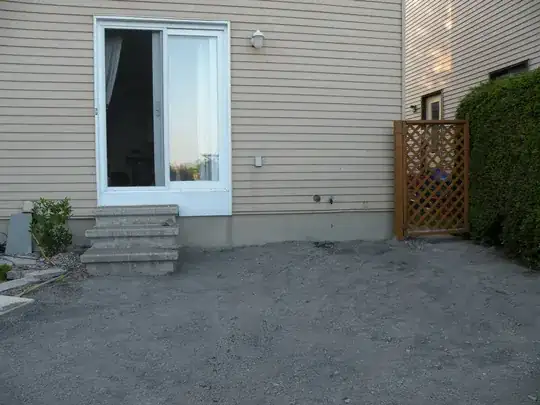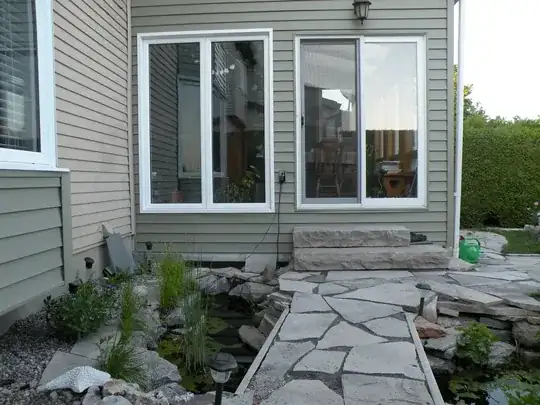In order for you to decide what is best you should think about these questions:
- what kind of soil is under the area of the step? Clay moves, sand drains well
- how old is the house? Older houses might have less soil movement
- is there any history of subsidence around your foundation?
- how long are you planning to stay in the home?
- does the area of the step have hard boundaries like walls which can keep interlock from moving?
- do you like to do a job once and not touch it again or do you like to tinker?
We live in the same province so it may be helpful to look at what house builders have been doing for the past thirty years. Common practice was to take a pre-cast concrete step and attach it to the foundation with two steel rods as seen in this picture. This kind of installation lasts the life of the house.

This method has the advantage that it's not moving: ever. The soil around a foundation can continue to subside for many years. Clay soils will rise and fall with the seasonal changes in moisture and any areas of poor drainage near the foundation will make this more noticeable.
Interlock bricks have strength when they are in contact with each other. If the soil subsides or there are no hard edges to retain or there is the possibility of water causing movement in the compacted stone dust then the installation will fail. Exposed edges are the most likely point of failure. I have seen some imaginative solutions such as pouring concrete to form a base and then compacting stone dust but I don't know if it lasts. Interlock pavers can also be problematic if the stone dust between the bricks settles or is washed away. Weeds and drifting become a problem. This can be solved by reapplication of stone dust as required or my favorite solution of polymeric sand as described here.
My preference was for solid stone steps that I installed here

I ignored a few common practices putting these in.
- I did not prepare a new base of compacted crushed stone,instead I relied on the previously undisturbed base
- I only used a two wheel dolly and some friends to move the 400 and 600 pound pieces
I had to shim one step by one eighth of an inch after the last winter. Took five minutes.
I think solid stone steps are worth the expense and effort.
- They have better stability if the soil moves.
- they look better
- less maintenance than interlock because there are less gaps
but...
- they are more work to install. Remember to have a slight inclination away from the house to allow water to drain
- if the orientation of the steps means there is the chance of rainwater hitting the steps interlock will drain better and will be less likely to have ice freeze on top in the winter
Natural stone can be sourced from local suppliers. Unilock offers the Sienna Line and Permacon has a complete product line of precast steps that look like stone and will withstand salt used in the winter.
Edit: Matthew asked about the use of salt. For natural stone using salt is not recommended as many types of stone will spall and chip. For concrete products
Permacon guarantees the structural integrity of its concrete
landscaping and masonry products, for a period of fifty (50) years
from the date of purchase of the product.
Most other interlock manufacturer's will have similar warranties. So if you live where ice and snow, and more importantly, freeze and thaw are common then for areas that are frequently used a manufactured concrete product is the way to go.

